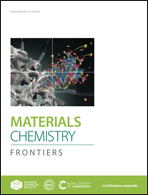Metal halide perovskite-based flexible tandem solar cells: next-generation flexible photovoltaic technology
Abstract
Flexible solar cells, which are compatible with low cost and high throughput roll-to-roll manufacturing, are specifically attractive for applications in wearable/portable electronic devices, building-integrated photovoltaics (BIPV), drones and satellites, etc. Integration of the narrow bandgap flexible solar cells, e.g., Cu(In, Ga)(S, Se)2 solar cells, organic solar cells, or the new class of lead-tin mixed perovskite solar cells (PSCs) with wide bandgap NIR-transparent PSCs allows two sub-cells to utilize solar light with different photon energies more efficiently and therefore minimizes thermalization loss to overcome the theoretical Shockley–Queisser single-junction limit (33%). In this review, we provide an overview of the recent progress of flexible perovskite-based tandem solar cells from the perspective of the narrow bandgap bottom cell and the near-infrared (NIR) transparent top cell. In addition, we discuss the key limitations related to energy losses in the recombination layer in two-terminal (2-T) tandems and the optical losses in four-terminal (4-T) tandems. Then we outline several strategies to overcome these limitations. Finally, we provide an outlook on roll-to-roll manufacturing and device encapsulation.

- This article is part of the themed collection: 2021 Materials Chemistry Frontiers Review-type Articles


 Please wait while we load your content...
Please wait while we load your content...